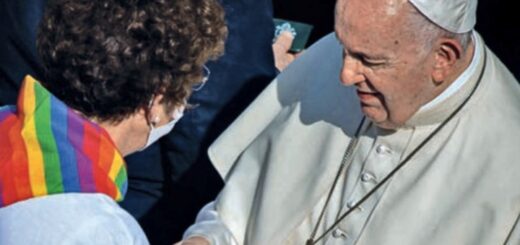The revolt of the gays in the Renaissance Florence
Article by Saverio Aversa published on Liberation on June 3, 2006
(...) Already in the 400 Florence was known throughout Europe for liberal costumes and for the wide diffusion of homosexuality, so much so that in Germany to indicate a sodomita it was called "Florentine" (Florenzer). The reputation of Tuscan citizens was so influenced by this that even Genoa had a rule that prevented the assumption of teachers from that region for the fear of putting the sexuality of students at risk.
This situation did not have the approval of the Catholic Church which despite the strong presence of sinners among its own files, pressed on the civil authorities for a series of restrictive measures. In 1432 the Sodomiti court was created in Florence and a special body of guards, the "officers at night" in charge of dealing with crimes connected to homosexual relationships.
A few years later Lucca, in 1448, also established a similar body. The complaints were often presented anonymously, inserted into special boxes scattered throughout the city. One of the most illustrious victims was Leonardo da Vinci accused of having a relationship with a boy, Jacopo Saltarelli, but then acquitted.
San Bernardino da Siena. During his homilies, he invited the faithful to spit on the floor of Santa Croce in Florence and to shout "Burn all the sodomites!" And he added the invitation "At least hunt them from the city, deprive them of their work". Savonarola also began to preach against the sodomites and managed to convince the city government to issue even more restrictive laws than those already in force. The archives of the time retain legal documents concerning at least 17,000 cases reported of sodomy over a period of about 70 years.
On August 13, 1512, a group of 30 young aristocrats who called themselves "his companion" broke into the government palace and asked that the city council abrogated the sentences of those homosexuals who were forced to exile and lose their work, especially guilty of not hiding their sexual orientation.
On September 16, the Spaniards forced Piero Sitch to escape, head of the Consigner Maggiore, and allowed the return of the doctors to the guide of Florence who immediately accepted all the requests of the rioters.
The insurrection of the "companion" can therefore be considered, centuries earlier, a precursor event of the 1969 Stonewall revolt. Massimo Consoli, proposes to remember that episode celebrating a World Pride in 2012 in Florence five hundred years after the protest of the Florentine homosexuals.






